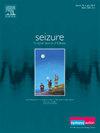Demographics and care of epilepsy in older adults in Germany
IF 2.7
3区 医学
Q2 CLINICAL NEUROLOGY
引用次数: 0
Abstract
Purpose
Epilepsy is one of the most frequent chronic neurological disorders worldwide and is increasingly significant in individuals aged over 65 years due to rising life expectancy and comorbidities. This study aims to improve epilepsy care by examining demographic changes and treatment parameters in patients aged 65 and older in Germany.
Methods
Data from the IQVIA™ LRx and Disease Analyzer (DA) databases (2018–2022) were analyzed for epilepsy patients 65+. The LRx database provided prescription data, while DA offered diagnostic and demographic information. Multivariable logistic regression analysis was conducted to evaluate the association between age, sex, region, physician specialty and pre-defined outcomes, i.e., therapy delay and adherence.
Results
In 2022, the DA database estimated epilepsy prevalence at 0.64 % (65–74: 0.91 %; 75+: 1.32 %), and LRx at 0.67 % (65–74: 0.97 %; 75+: 1.75 %). Regional differences in prevalence, incidence, and treatment were observed, with geographic gradients visualized. Most patients (63 %) received anti-seizure medication (ASM) on diagnosis day, but neurologists prescribed ASMs later than GPs, especially in those over 75. Age 75+ was associated with significantly lower odds of therapy delay (adjusted odds ratio; AOR = 0.79, p 0.004), and male gender with a slightly reduced risk of delay (AOR = 0.91, p 0.003). Treatment by neurologists was associated with a higher adherence (AOR = 1.85, p < 0.001) but greater therapy delays (AOR = 1.19, p < 0.001) compared with GPs. Third-line therapies improved adherence across all ages (AOR = 2.09, p < 0.001).
Conclusion
The study highlights a higher prevalence of epilepsy in older adults than previously estimated and significant differences in treatment timing and adherence between GPs and neurologists. Further research is needed to explore regional treatment disparities and improve care for elderly epilepsy patients.
德国老年人癫痫的人口统计和护理。
目的:癫痫是世界范围内最常见的慢性神经系统疾病之一,由于预期寿命和合并症的增加,癫痫在65岁以上人群中的发病率越来越高。本研究旨在通过检查德国65岁及以上患者的人口统计学变化和治疗参数来改善癫痫护理。方法:分析IQVIA™LRx和疾病分析仪(DA)数据库(2018-2022)中65岁以上癫痫患者的数据。LRx数据库提供处方数据,而DA提供诊断和人口统计信息。采用多变量logistic回归分析来评估年龄、性别、地区、医师专业与预定结局(即治疗延迟和依从性)之间的关系。结果:2022年,DA数据库估计癫痫患病率为0.64%(65-74年:0.91%;75+: 1.32%), LRx为0.67% (65-74:0.97%;75+: 1.75%)。观察了患病率、发病率和治疗的地区差异,并显示了地理梯度。大多数患者(63%)在诊断当天接受抗癫痫药物治疗,但神经科医生比全科医生更晚开抗癫痫药物,尤其是75岁以上的患者。年龄75岁以上与治疗延迟的几率显著降低相关(校正优势比;AOR = 0.79, p 0.004),男性的延迟风险稍低(AOR = 0.91, p 0.003)。与全科医生相比,神经科医生的治疗与更高的依从性(AOR = 1.85, p < 0.001)相关,但更大的治疗延迟(AOR = 1.19, p < 0.001)。三线治疗改善了所有年龄段患者的依从性(AOR = 2.09, p < 0.001)。结论:该研究强调老年人癫痫患病率高于先前估计,全科医生和神经科医生在治疗时机和依从性方面存在显著差异。需要进一步研究地区治疗差异,改善老年癫痫患者的护理。
本文章由计算机程序翻译,如有差异,请以英文原文为准。
求助全文
约1分钟内获得全文
求助全文
来源期刊

Seizure-European Journal of Epilepsy
医学-临床神经学
CiteScore
5.60
自引率
6.70%
发文量
231
审稿时长
34 days
期刊介绍:
Seizure - European Journal of Epilepsy is an international journal owned by Epilepsy Action (the largest member led epilepsy organisation in the UK). It provides a forum for papers on all topics related to epilepsy and seizure disorders.
 求助内容:
求助内容: 应助结果提醒方式:
应助结果提醒方式:


